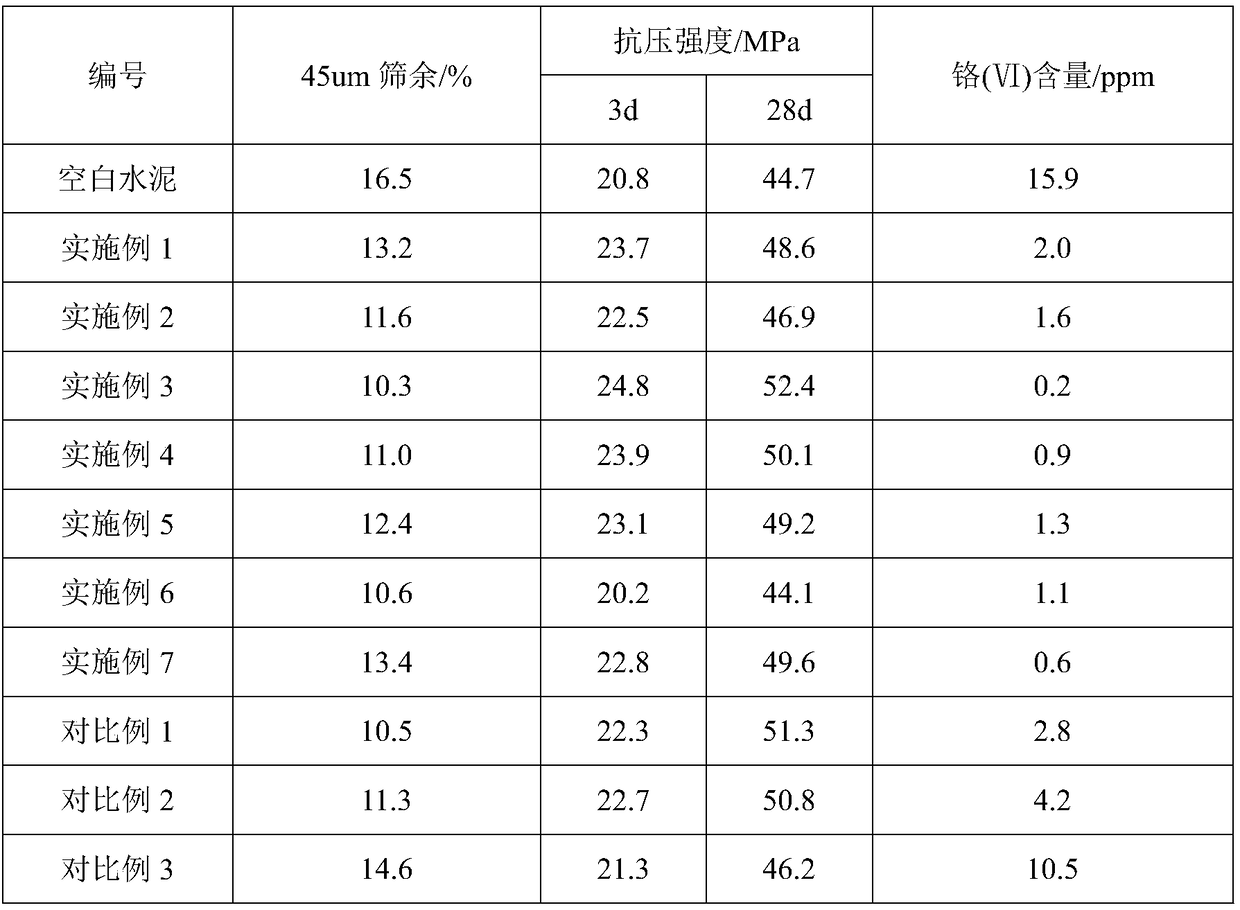Cement grinding aid
A cement grinding aid and solvent technology, applied in the field of cement grinding aids, can solve problems such as increasing the production cost of a cement plant, and achieve the effects of saving cement grinding power consumption, reducing dissolution, and improving grinding efficiency
- Summary
- Abstract
- Description
- Claims
- Application Information
AI Technical Summary
Problems solved by technology
Method used
Image
Examples
Embodiment 1
[0023] A cement grinding aid, consisting of the following substances by weight fraction: 8% of phosphorous anhydride-ethylene glycol reactant, 3% of polycarboxy compound, 3% of grinding aid, 5% of potassium pyrosulfite, and 0.1% of defoamer %, the balance is water.
[0024] The preparation method of described phosphorous anhydride-ethylene glycol reactant is as follows: add ethylene glycol, phosphorous anhydride (P 4 o 6 ), a catalyst and a reaction solvent, the temperature is raised to 80° C., and the solvent is distilled off under reduced pressure, which is the phosphorous anhydride-ethylene glycol reactant.
[0025] The catalyst is concentrated sulfuric acid.
[0026] The solvent is acetone.
[0027] The molar ratio of ethylene glycol to phosphorous anhydride is 4:1.
[0028] The dosage of the catalyst is 1% of the total weight of ethylene glycol and phosphorous anhydride.
[0029] The polycarboxy compound is trisodium nitrilotriacetate.
[0030] The grinding aid subs...
Embodiment 2
[0033] A cement grinding aid, consisting of the following substances in weight fractions: 12% of phosphorous anhydride-ethylene glycol reactant, 1% of polycarboxy compound, 5% of grinding aid, 1% of potassium pyrosulfite, and 1% of defoamer %, the balance is water.
[0034] The preparation method of described phosphorous anhydride-ethylene glycol reactant is as follows: add ethylene glycol, phosphorous anhydride (P 4 o 6 ), a catalyst and a reaction solvent, the temperature is raised to 40° C., and the solvent is distilled off under reduced pressure, which is the phosphorous anhydride-ethylene glycol reactant.
[0035] The catalyst is anhydrous sodium acetate.
[0036] The solvent is tetrahydrofuran.
[0037] The molar ratio of ethylene glycol to phosphorous anhydride is 12:1.
[0038] The dosage of the catalyst is 5% of the total weight of ethylene glycol and phosphorous anhydride.
[0039] The polycarboxy compound is diethyltriaminepentaacetic acid.
[0040] The grindi...
Embodiment 3
[0043] A cement grinding aid, consisting of the following substances in weight fractions: 10% of phosphorous anhydride-ethylene glycol reactant, 2% of polycarboxy compound, 4% of grinding aid, 3% of potassium metabisulfite, and 0.6% of defoamer %, the balance is water.
[0044] The preparation method of described phosphorous anhydride-ethylene glycol reactant is as follows: add ethylene glycol, phosphorous anhydride (P 4 o 6 ), a catalyst and a reaction solvent, the temperature is raised to 60° C., and the solvent is distilled off under reduced pressure, which is the phosphorous anhydride-ethylene glycol reactant.
[0045] The catalyst is 2-naphthalenesulfonic acid.
[0046] The molar ratio of ethylene glycol to phosphorous anhydride is 8:1.
[0047] The dosage of the catalyst is 3% of the total weight of ethylene glycol and phosphorous anhydride.
[0048] The polycarboxy compound is trisodium hydroxyethyl ethylenediamine triacetate.
[0049] The grinding aid substance is...
PUM
 Login to View More
Login to View More Abstract
Description
Claims
Application Information
 Login to View More
Login to View More - R&D
- Intellectual Property
- Life Sciences
- Materials
- Tech Scout
- Unparalleled Data Quality
- Higher Quality Content
- 60% Fewer Hallucinations
Browse by: Latest US Patents, China's latest patents, Technical Efficacy Thesaurus, Application Domain, Technology Topic, Popular Technical Reports.
© 2025 PatSnap. All rights reserved.Legal|Privacy policy|Modern Slavery Act Transparency Statement|Sitemap|About US| Contact US: help@patsnap.com

